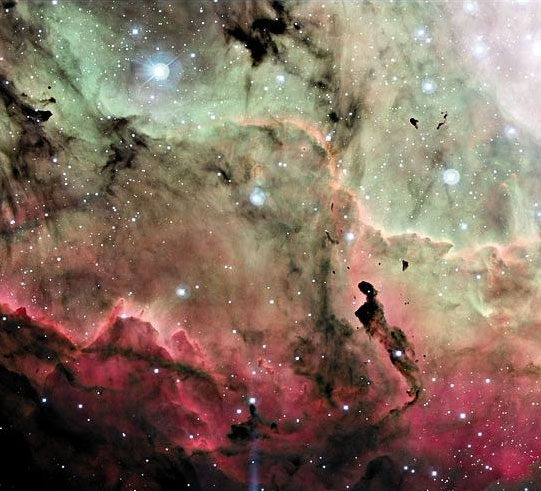Close Up of the Lagoon Nebula

Explanation:
Stars are battling gas and dust in the Lagoon Nebula
but the photographers are winning.
Also known as M8,
this photogenic nebula is
visible
even without binoculars towards the
constellation of
Sagittarius.
The energetic processes of
star formation create not
only the colors but the
chaos.
The
red-glowing gas
results from high-energy starlight striking interstellar
hydrogen gas.
The dark
dust
filaments that lace
M8 were created in
the atmospheres of cool
giant stars and in the
debris from
supernovae explosions.
The speculator portion of the
Lagoon Nebula taken by the
CFHT was created from light emitted by
hydrogen (shown in red) and light emitted by
oxygen
(shown in green).
The light from
M8 we see today left about 5000 years ago.
Light takes about 50 years to cross this section of
M8.
Authors & editors:
Robert Nemiroff
(MTU) &
Jerry Bonnell
(USRA)
NASA Web Site Statements, Warnings,
and Disclaimers
NASA Official: Jay Norris.
Specific
rights apply.
A service of:
LHEA at
NASA /
GSFC
& Michigan Tech. U.

